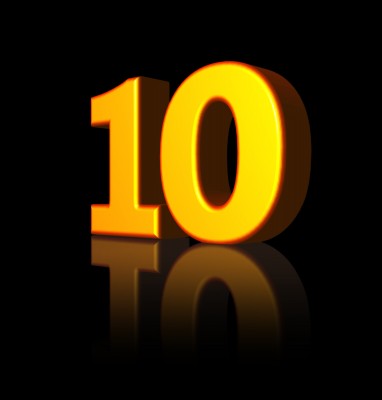How Tradeshows and Social Media Co-exist
There is Still a Place for Trade Shows in Your Marketing Mix
Talk to anyone who sends more than 2 texts a day and they will tell you that the only way to market products and services is to use Twitter, Facebook, Linkedin or search engine optimization. They consider face-to-face marketing to be an antiquated form of communication and that the days of tradeshows are numbered.
 Those of us who make our living producing trade shows get the opportunity to see things in a different light. Walk the aisles at the consumer electronics show and watch buyers from all over the world making deals with major manufacturers. Go to the HIMSS show and see hospital administrators finalizing plans for purchase of their new IT infrastructure. Attend the American College of Cardiology meeting and listen to heart specialists discussing the advantages of various new instruments with the inventor. This type of important business communication can only be done face-to-face and the most cost- and time-effective way to do this is at a tradeshow.
Those of us who make our living producing trade shows get the opportunity to see things in a different light. Walk the aisles at the consumer electronics show and watch buyers from all over the world making deals with major manufacturers. Go to the HIMSS show and see hospital administrators finalizing plans for purchase of their new IT infrastructure. Attend the American College of Cardiology meeting and listen to heart specialists discussing the advantages of various new instruments with the inventor. This type of important business communication can only be done face-to-face and the most cost- and time-effective way to do this is at a tradeshow.
Social Media Should be an Important Part of Your Tradeshow Promotion
The fact is, social media can and should be an important part of tradeshow promotion and communication. The ability to reach out to potential customers before, during, and after a show using this technology can greatly increase tradeshow ROI. Just like any other marketing project, exhibitors should enlist the assistance of a person or group that has experience with the most popular networks, explain their goals and put together a plan for your tradeshow.
Keep an open mind. Don’t expect overnight success. Continue to review and improve your approach to both media and the results will come. Let’s talk.
Chasing Tradeshow Cost Savings?
Many exhibitors are being forced to find ways to reduce the cost of participation in tradeshows. The most common way this task is approached is to look at each cost line item and see what can be done to save money.

The common first step is to contract for a smaller booth space. This not only saves on the cost of the space rental but also provides an across-the-board cost reduction. The downside of such a reduction? You may have to settle for a less than desirable booth location and you’ll also need to make sure your display properties will fit in the smaller format.
After booth space, the likely second step is to look at each cost category for the show and try to determine which costs can be reduced. This is a very time-consuming process, and usually entails trying to find out how much your exhibit weighs and how long it should take to set up. This information is not always easy to get your hands on, and when you do, there are always a slew of variables that can affect the final cost of the show.
In my opinion, however, the best first step to take is to contact your exhibit supplier (assuming they store and manage your display) and lay your cards on the table. Explain to them that you have been asked to cut 25% off the cost of last year’s show. Ask them to provide recommendations. Remember, they do this for a living! They are not likely to be overly excited about this mission, but they should support you through good times and bad.
If they can’t or won’t provide you with some good ideas, you should probably consider finding another supplier.
Thinking about changing exhibit companies? Let’s Talk.
Exhibit Acronyms – What is a Trade Show RFP?
RFP is an Acronym for Request for Proposal
 This is one of the few tradeshow exhibit industry terms that is also pretty common in other areas of business. In a nutshell, it means that your company has a need to buy products or services and you’d like to invite prospective vendors to submit proposals. RFPs can be sent out for something as simple as a rental backwall display or as elaborate as complete multi-year management of a hundred shows per year tradeshow program.
This is one of the few tradeshow exhibit industry terms that is also pretty common in other areas of business. In a nutshell, it means that your company has a need to buy products or services and you’d like to invite prospective vendors to submit proposals. RFPs can be sent out for something as simple as a rental backwall display or as elaborate as complete multi-year management of a hundred shows per year tradeshow program.
Once received, evaluation of submitted proposals can be difficult and time-consuming. As such, the number of companies that you invite should be limited to 3 – 5.
The basic RFP format is to provide:
- An overview of your company.
- A summary of your needs.
- An outline of how and when proposals should be submitted.
In order to make the process as efficient as possible, it is best to provide information that is concise. The key to dealing with responses in a timely fashion is to direct submissions so they are as similar in format as possible.
If you intend to request custom exhibit designs from bidders, keep in mind that designs are presented in a variety of formats from renderings mounted on boards to web-based video productions. You should clearly communicate the presentation format you prefer. When requesting designs, providing a budget number will make the final evaluation process much more productive.
You should also provide a format for the cost portion of the proposals. This can be in the form of a spreadsheet included in your RFP to be filled out and returned, or even as simple as an itemized list. Including this information helps to clearly describe what cost elements are to be included in the proposal. Things like carpet, electrical service, vacuuming, floral or technical support are not always part of the RFP process.
The bottom line? Give prospective vendors enough information to put together a proposal that is complete and in a format that makes it easy to compare. Time spent editing and refining your RFP documents can result not only in significant time savings when the time comes to review submissions, but also more quality in responses.
Need Exhibit Management for your trade show? We are ready to earn your business. Let’s talk.
Ten Tips for Better Trade Show Exhibits
Trade shows can be one of the most cost-effective ways for your company to reach qualified prospects. And with a little bit of planning you can dramatically improve your results.
 Start planning as soon as you know you will be attending the show. Make your booth space reservation as far in advance as possible so you can select the best location and size.
Start planning as soon as you know you will be attending the show. Make your booth space reservation as far in advance as possible so you can select the best location and size.- The majority of trade show attendees plan their trade show exhibit visits before the show. 75% of buyers arrive with pre-set purchasing objectives. A pre-show marketing campaign is essential to making the most of your trade show exhibit investment.
- Most trade shows are covered by local and industry media. Before the show, invite local media contacts to visit your booth. Find out if there will be any trade press at the show and set up a time to meet.
- Promote the shows your company will be exhibiting at and your booth location on your company website, Twitter and Facebook pages.
- Avoid printing anything at the trade show or at a hotel business center. Ship copies from your office or a printer to the show.
- Put together a comprehensive inventory list before you ship your exhibit. This will make check in and out-bound shipping more efficient, and better ensure that any missing items are identified rapidly.
- Bring more sales collateral and business cards than you think you could possibly need. You cannot afford to run out and it is inexpensive to ship it back to your office.
- Bring backup copies of all multimedia presentations on CDs just in case you have an issue with your laptop. You can also store copies of presentations online so that you can access them and download if needed.
- Organize your trade show leads in the downtime during the show and start to follow-up even before you leave the exhibit floor. Send the contact information for prospects to your office from the show and have someone send out requested collateral material to these prospects so it is waiting for them when they return to their office.
- Put together a trade show exhibit emergency kit: packing tape, scissors, pens, epoxy putty, a small trash can, power strips, extension cords, USB flash drives, cutting tools, and a tool kit. Add in anything that you might need for small emergency booth repairs and replacement parts for anything that can wear out or burn out like light bulbs.
Trade show exhibits are a big investment. Just a little bit of planning and a few tips from the pros, and you are well on the way to having a less stressful and more successful trade show exhibit.
Archives
- July 2021
- June 2021
- May 2021
- April 2021
- October 2018
- September 2018
- August 2018
- July 2018
- June 2018
- May 2018
- April 2018
- March 2018
- February 2018
- January 2018
- December 2017
- November 2017
- October 2017
- September 2017
- August 2017
- July 2017
- June 2017
- May 2017
- April 2017
- March 2017
- February 2017
- January 2017
- December 2016
- November 2016
- October 2016
- September 2016
- August 2016
- July 2016
- June 2016
- May 2016
- April 2016
- March 2016

 A while back, I had the opportunity to deliver a demonstration display to a prospective client who was considering the purchase of several units. The only way that I could transport the cases for this 10’ display was to strap one of them to the top of my midsized SUV! Needless to say, the client questioned the portability of that particular unit. Fortunately, every other display that met her needs packed in multiple cases with wheels and weighed about the same so we had many better options, but sometimes lessons are learned from bad as well as good.
A while back, I had the opportunity to deliver a demonstration display to a prospective client who was considering the purchase of several units. The only way that I could transport the cases for this 10’ display was to strap one of them to the top of my midsized SUV! Needless to say, the client questioned the portability of that particular unit. Fortunately, every other display that met her needs packed in multiple cases with wheels and weighed about the same so we had many better options, but sometimes lessons are learned from bad as well as good.